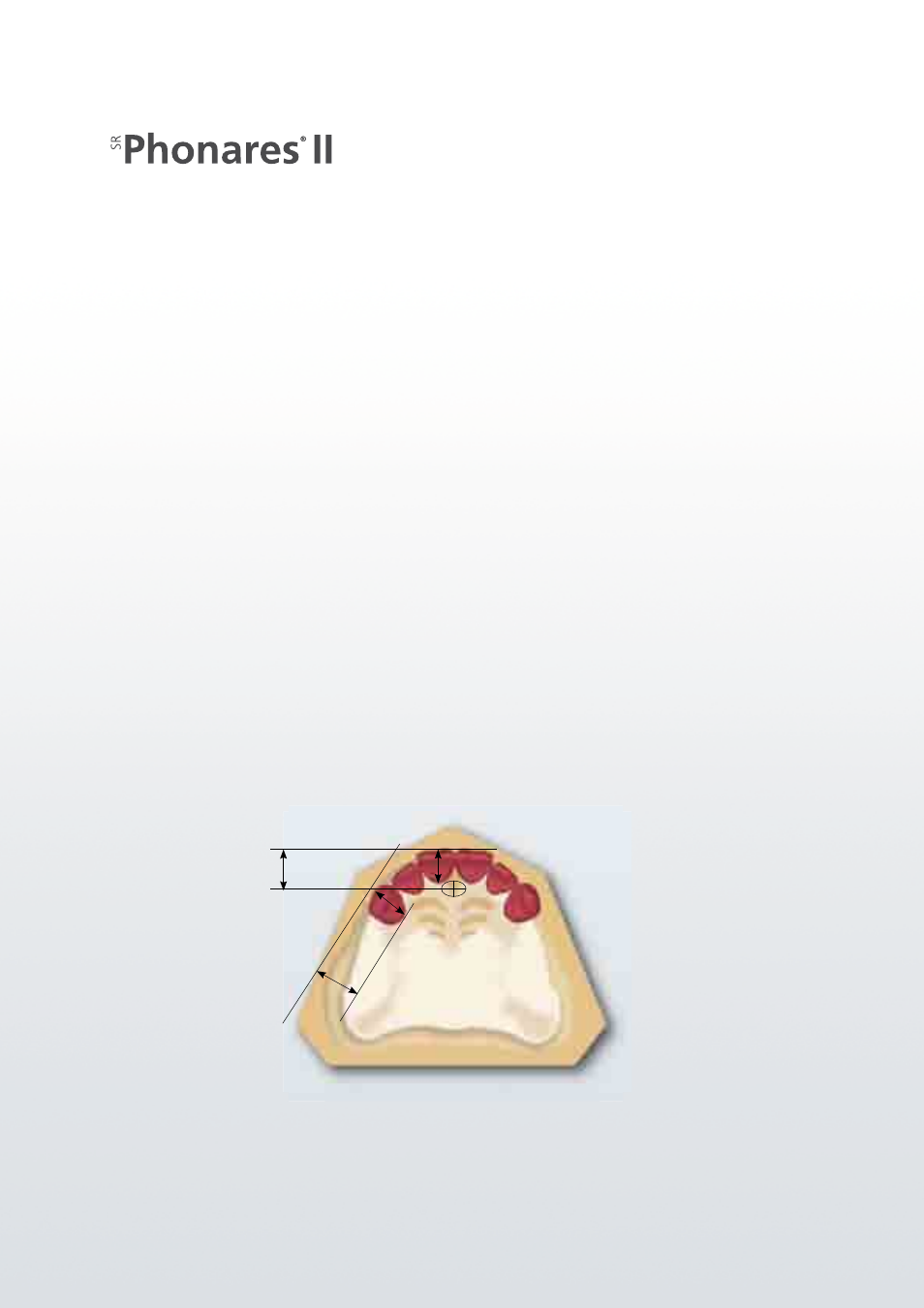Anterior tooth setup – Ivoclar Vivadent SR Phonares II User Manual
Page 16

16
setup according to model analysis
The incisive papilla provides a reliable reference point for the anterior setup because of its
transverse and sagittal wear resistance.
In a normal bite situation, the
central incisors
are aligned with the incisive papilla by positioning
the labial surface approx. 7 mm towards the front from the centre of the incisive papilla.
The raphe median plane determines the symmetry axis of the anterior setup in the upper jaw. The
course of the incisal edges of the central incisors is determined by half the height of the overall
vertical dimension plus a 2-mm overlap.
The position of the
canine teeth
plays a decisive role in achieving a harmonious facial expression.
In the dental arch, the canines are positioned in the area of the first large pair of palatine rugae,
with the labial surface of the maxillary canines being placed at a distance of approx. 9 mm. The
vertical alignment of the canines significantly influences the curvature of the smile line.
After the canines have been positioned, the
lateral incisors
are placed in the space between the
central incisors and the canines. By slightly rotating or interlocking the lateral incisors, highly
individualized effects can be achieved.
Starting with the canines, the
lower incisors
are set up in a vertical and sagittal distance that is in
line with the respective occlusal position and bite situation.
You can check if the smile line runs symmetrical to the arch of the lower lip by transferring the
markings on the bite rim to a silicone key.
approx.
7 mm
approx. 9 mm
Please refer to the BPS handbook for a detailed description of the model analysis and anterior setup
method.
anterIor tooth setuP
